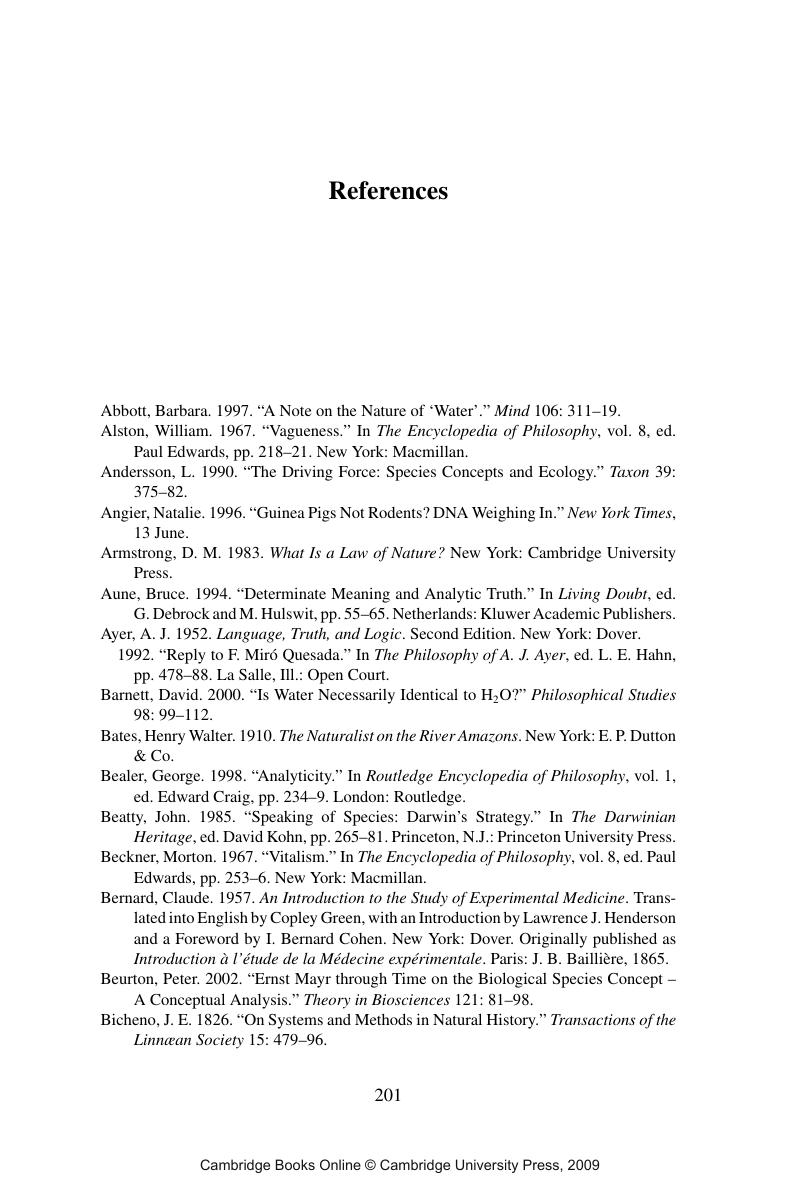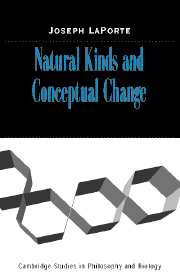Book contents
- Frontmatter
- Contents
- Preface
- Introduction
- 1 What Is a Natural Kind, and Do Biological Taxa Qualify?
- 2 Natural Kinds, Rigidity, and Essence
- 3 Biological Kind Term Reference and the Discovery of Essence
- 4 Chemical Kind Term Reference and the Discovery of Essence
- 5 Linguistic Change and Incommensurability
- 6 Meaning Change, Theory Change, and Analyticity
- Notes
- References
- Index
- References
References
Published online by Cambridge University Press: 10 December 2009
- Frontmatter
- Contents
- Preface
- Introduction
- 1 What Is a Natural Kind, and Do Biological Taxa Qualify?
- 2 Natural Kinds, Rigidity, and Essence
- 3 Biological Kind Term Reference and the Discovery of Essence
- 4 Chemical Kind Term Reference and the Discovery of Essence
- 5 Linguistic Change and Incommensurability
- 6 Meaning Change, Theory Change, and Analyticity
- Notes
- References
- Index
- References
Summary

- Type
- Chapter
- Information
- Natural Kinds and Conceptual Change , pp. 201 - 214Publisher: Cambridge University PressPrint publication year: 2003



